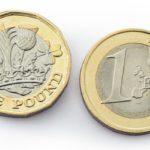The Aussie dollar distanced from the strongest level in more than four months against its US counterpart, after Australias retail sales trailed analysts estimates and following RBA Governor Glenn Stevens comments that it was too early to reckon the re-balancing of the economy from mining investment to domestic-led growth will occur smoothly.
AUD/USD touched a session low at 0.9206 at 05:30 GMT, after which the pair consolidated at 0.9224, losing 0.26% for the day. Support was likely to be received at March 26th low, 0.9154, while resistance was to be encountered at April 2nd high, 0.9264. On April 1st, AUD/USD touched 0.9302, the highest since November 21.
Retail sales rose 0.2% in February from a month ago, trailing analysts estimates for a 0.3% increase and sharply below Januarys 1.2% gain, Australian government data showed today.
Reserve Bank of Australia Governor Glenn Stevens commented today that it was too early to reckon the re-balancing of the economy from mining investment to domestic-led growth will occur smoothly at a speech in Brisbane, the Queensland’s capital. On April 1, the RBA officials maintained the main interest rate at a record-low 2.5%, where it has been since August last year, in line with analysts’ estimates.
“There are some promising early signs that things may turn out not too badly,” Stevens said of the transition in the text of a speech today in Queensland’s capital, Brisbane, cited by Bloomberg. “But early signs are just that: early. It is far too soon to think about counting any chickens yet. Let’s also be clear that the capacity to fine-tune these outcomes is very limited.”
Aussies demand was pressured yesterday, after data showed the number of building approvals in Australia declined in February, raising concerns over the health of the nation’s housing sector, which the central bank sees as crucial to re-balance the economy as a mining investment boom wanes.
A report by the Australian Bureau of Statistics revealed a seasonally adjusted 5% drop to 16 669 building approvals in February, compared to expectations for a 2.5% decline and after a 6.8% increase in the previous month. On year-over-year basis, building permits rose 23.2% in February, sharply below the 34.6% gain in the previous month and compared to analysts’ projections of a 27.9% increase.
Meanwhile, demand for the US dollar was supported yesterday after a report by the US Census Bureau revealed that nation’s factory orders rose 1.6% in February, after a revised 1% drop in the previous month, which was higher than previously reported and exceeding analysts’ forecasts for a 1.2% gain. The indicator reflects current industrial activity in the country and also provides clues over sector development in the future.
In addition, the US private sector added 191 000 workers last month after February’s number was revised up by 39 000 to 178 000, a report by Automatic Data Processing Inc. (ADP), showed yesterday. However, analysts’ forecasts called for a 195 000 gain in March.
The ADP report usually comes out two days before the official employment report by the Bureau of Labor Statistics (BLS), thus, providing clues over the tendency in nation’s non-farming sector. The government report scheduled to be released tomorrow may show private payrolls rose by 200 000 last month, the most in four months, according to the median experts’ forecast.
Elsewhere, NZD/USD touched a session low at 0.8533 at 07:41 GMT, after which consolidation followed at 0.8538, losing 0.4% for the day. Support was likely to be received at March 24th low, 0.8516, while resistance was to be met at April 2nd high, 0.8618. On April 1st, NZD/USD touched 0.8702, the pair’s highest since August 2011.





